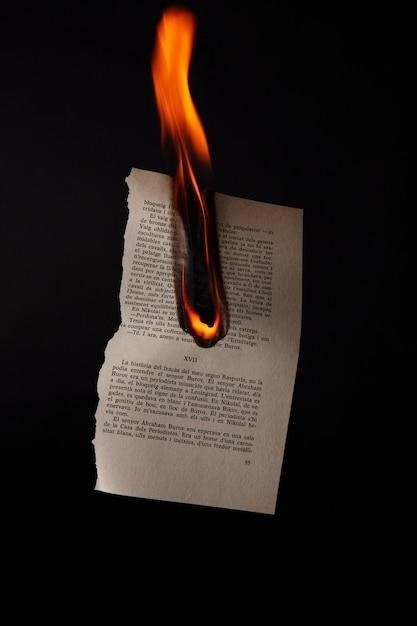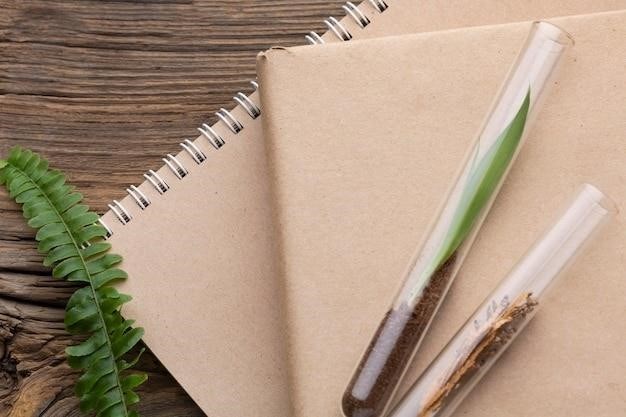Picnic Table PDF Plans⁚ A Comprehensive Guide
Discover a wealth of free and readily available PDF picnic table plans online. These comprehensive guides offer detailed instructions, material lists, and diagrams for various styles, from traditional to modern designs, ensuring a successful DIY project for all skill levels. Build your perfect outdoor space today!
Building your own picnic table can be a rewarding and cost-effective project, offering a personalized touch to your outdoor space. Numerous free and paid PDF plans are available online, catering to diverse skill levels and design preferences. These digital blueprints provide detailed step-by-step instructions, comprehensive material lists, and clear diagrams, minimizing guesswork and maximizing efficiency. Whether you’re a seasoned woodworker or a beginner, a well-structured PDF plan serves as an invaluable guide, ensuring a sturdy and aesthetically pleasing picnic table tailored to your specific needs and vision. The availability of various styles, from classic rectangular designs to more intricate hexagonal or round options, ensures a perfect fit for any backyard, patio, or park setting. Explore the vast selection of plans to find the perfect match for your skill set and desired outcome. Remember to check reviews and ratings before committing to a particular plan to ensure accuracy and clarity.
Types of Picnic Table Plans Available
The world of picnic table plans is surprisingly diverse! You’ll find options ranging from the classic rectangular design, perfect for larger gatherings, to more space-saving square or even circular tables ideal for smaller patios or decks. Many plans cater to families with young children, offering kid-sized versions with lower seating heights for enhanced safety and comfort. For those seeking unique aesthetics, hexagon or octagon picnic table plans provide a visually striking alternative. If portability is key, consider plans for folding picnic tables, easily stored away when not in use. Some advanced plans even incorporate features like built-in ice chests or attached canopies for added convenience and shade. The choice is vast, ensuring that regardless of your space constraints, aesthetic preferences, or skill level, you can find a picnic table plan that aligns perfectly with your vision. The internet offers a treasure trove of options, from simple to elaborate designs.
Traditional Picnic Table Plans
Traditional picnic table plans typically feature a rectangular tabletop supported by a sturdy A-frame base. These designs are known for their robust construction and classic appeal, often using readily available lumber like 2x4s and 2x6s. Many free plans offer detailed instructions and diagrams, guiding you through each step of the process, from cutting the lumber to assembling the frame and attaching the tabletop and benches. The attached benches provide ample seating for family and friends. Some plans incorporate a slightly more complex design with the addition of decorative elements or slightly different leg styles, but the core structure remains fundamentally the same. These plans are often a great starting point for beginner woodworkers due to their straightforward design and readily available materials. Numerous online resources provide clear, step-by-step instructions and often include material lists and cut lists to help streamline the building process. The resulting picnic table is a timeless addition to any outdoor space.
Kids’ Picnic Table Plans
Designing a picnic table specifically for children requires careful consideration of size and safety. Kids’ picnic table plans often feature smaller dimensions than adult-sized tables, making them perfectly scaled for younger users. The height is typically lower to accommodate smaller children, ensuring comfortable seating and preventing falls. Safety is paramount, and plans often emphasize smooth edges and rounded corners to minimize the risk of injury. Many designs incorporate bright colors and playful aesthetics, making them visually appealing to children. Some plans might include extra features like a built-in sandbox or a small canopy for shade. The materials used are usually durable and easy to clean, as spills and messes are inevitable with young children. These plans often utilize simpler joinery techniques, making them manageable for less experienced woodworkers. Free plans are widely available online, providing detailed instructions and diagrams, complete with material lists and cut lists tailored to the specific dimensions of the children’s table. The end result is a charming and safe outdoor play area perfect for picnics and imaginative play.
Small and Compact Picnic Table Plans
Space-saving is key when considering small and compact picnic table plans. These designs prioritize efficiency, perfect for patios, balconies, or smaller yards where a full-sized table might overwhelm the area. Many plans focus on minimizing the footprint without sacrificing seating capacity. This often involves clever design choices like utilizing narrower benches or employing a more streamlined table structure. Some might opt for a circular or octagonal tabletop, maximizing seating in a smaller space. Folding designs are extremely popular, offering the convenience of storage when not in use. These plans often use lightweight materials such as cedar or redwood, reducing overall weight and making them easier to move. Detailed PDF plans readily available online provide dimensions optimized for smaller spaces. These guides typically include precise measurements, detailed illustrations, and easy-to-follow instructions, making construction straightforward even for novices. The finished product is a functional and aesthetically pleasing addition to any limited outdoor area, proving that even small spaces can accommodate comfortable and enjoyable outdoor dining experiences.
Round and Octagonal Picnic Table Plans
Round and octagonal picnic table plans offer a unique aesthetic departure from the traditional rectangular design. These shapes provide a more intimate and sociable seating arrangement, encouraging conversation among all guests. The curved design can also soften the look of a patio or garden, creating a visually appealing focal point. Finding detailed PDF plans for these less common shapes is still possible, with many online resources offering free downloads. These plans typically include comprehensive instructions, material lists, and detailed diagrams to guide the construction process. Octagonal tables, in particular, offer a compromise between the space-saving compactness of a round table and the linear seating of a rectangle. The construction might involve slightly more complex cuts and joinery than rectangular designs, but the result is a visually stunning and functional piece of outdoor furniture. Whether choosing round or octagonal, the key is to find plans that clearly outline the construction steps, including the creation of the curved tabletop and the appropriate leg supports to ensure stability. Careful consideration of materials and finishes will contribute to the longevity and overall appeal of the finished piece.
Folding Picnic Table Plans
Folding picnic table plans cater to those with limited space or a need for versatile outdoor furniture. Unlike their stationary counterparts, these tables offer the convenience of easy storage and portability. Many free PDF plans are available online, showcasing various folding mechanisms and designs. Some designs incorporate simple hinges allowing the table to fold flat, while others utilize more complex mechanisms for compact storage. The plans often include detailed diagrams illustrating the construction of the folding components, such as hinges, latches, and support braces. Careful attention to the choice of hinges and joinery is crucial for ensuring smooth operation and durability. The use of high-quality hardware is recommended to withstand repeated folding and unfolding. While the construction might involve slightly more intricate joinery than a standard picnic table, the resulting convenience and space-saving attributes make it worthwhile for many. Before embarking on the project, carefully review the plans to understand the folding mechanism and ensure you possess the necessary woodworking skills and tools. A successful build will reward you with a practical and space-saving addition to your outdoor area.
Hexagon Picnic Table Plans
Hexagon picnic table plans offer a unique and visually appealing alternative to the traditional rectangular design. These plans provide detailed instructions for constructing a six-sided table, often incorporating equally sized benches or separate seating arrangements. The hexagonal shape can be particularly space-efficient, fitting comfortably into corners or smaller outdoor areas. Finding free PDF plans for hexagon picnic tables might require some searching, but the unique aesthetic is a worthwhile reward. Construction typically involves cutting precise angles for the tabletop and bench supports. Accurate measurements and cuts are essential to ensure the hexagon’s symmetry and stability. Some designs incorporate a central support post for added strength and stability, especially for larger tables. The plans usually include detailed diagrams and cut lists to guide you through each stage of the construction process. While the geometry may present a slight increase in complexity compared to a rectangular design, many readily available resources provide clear and concise instructions. The final result is a striking and conversation-starting piece of outdoor furniture that adds a touch of modern design to any garden or patio.
Advanced Picnic Table Plans
For experienced woodworkers seeking a challenge, advanced picnic table plans offer intricate designs and complex joinery techniques. These plans often incorporate features beyond the basic table and bench structure, such as built-in storage compartments, ice chests, or even integrated games like chessboards. Some designs might involve curved elements, requiring specialized tools and skills in woodworking. Advanced plans often utilize more sophisticated joinery methods, including mortise and tenon joints or intricate dovetailing, resulting in a stronger and more durable structure. Expect detailed diagrams and precise measurements to be crucial for success. The plans might also feature more elaborate finishing techniques, such as intricate carvings or detailed staining patterns. Materials used may extend beyond basic lumber to include composite materials or metal accents. These advanced projects demand a higher level of woodworking expertise and often necessitate the use of specialized tools such as routers, planers, and joinery tools. While the construction time and skill level are elevated, the final product is a unique and impressive piece of outdoor furniture demonstrating a high level of craftsmanship. The internet offers a variety of resources for those seeking such ambitious projects, including detailed tutorials and videos.
Free PDF Download Resources
Numerous websites and blogs dedicated to DIY projects offer free downloadable PDF plans for picnic tables. These resources often include detailed instructions, material lists, cut lists, and diagrams to guide you through the construction process. Popular platforms like Ana-White.com and Construct101 provide a range of plans catering to different skill levels and design preferences. The Spruce Crafts also offers a collection of free plans, showcasing various styles and sizes; These free resources are invaluable for budget-conscious DIY enthusiasts, eliminating the cost of purchasing commercial plans. Remember to carefully review the plan specifications before starting your project, ensuring you possess the necessary tools and skills. Many free plans provide visual aids such as photos and videos to complement the written instructions, simplifying the assembly process. Always check for user reviews and comments to gauge the plan’s accuracy and ease of use before committing to a specific design. This collaborative approach helps to ensure a smoother and more successful building experience, making the creation of a custom picnic table accessible to a wider audience.
Choosing the Right Plan for Your Needs
Selecting the ideal picnic table plan requires careful consideration of several factors. First, assess your available space. Measure the area where the table will be placed to determine the maximum dimensions. Consider the number of people you wish to comfortably seat; plans range from intimate two-person tables to larger designs accommodating eight or more. Next, evaluate your woodworking skills. Beginner-friendly plans utilize simpler designs and straightforward instructions, while advanced plans may involve more complex joinery techniques. The desired aesthetic is another crucial element. Choose a plan that aligns with your personal style, whether it’s a classic A-frame design, a modern octagon shape, or a rustic aesthetic. The materials specified in the plan should be readily accessible and within your budget. Finally, thoroughly review the plan’s details, including the materials list, cut list, and step-by-step instructions. Ensure you have the necessary tools and are comfortable with the construction methods before beginning. Taking the time to thoughtfully choose a plan tailored to your needs and abilities will significantly increase the likelihood of a successful and enjoyable DIY project.
Building Your Picnic Table⁚ A Step-by-Step Overview
Constructing your picnic table from a PDF plan typically involves a sequential process. Begin by carefully reviewing the plan’s instructions and gathering all necessary materials and tools. This includes lumber (often 2x4s and 2x6s), screws, wood glue, and tools such as a saw, drill, and measuring tape. Accuracy in cutting the lumber according to the plan’s cut list is paramount. Precise cuts ensure proper assembly and a stable finished product. Follow the plan’s instructions for assembling the table’s frame, typically starting with the legs and supports. Secure joints with screws and glue for added strength and stability. Next, attach the table top, ensuring it’s level and securely fastened. Similarly, construct and attach the benches, paying close attention to the plan’s specifications for seat height and bench length. Once assembled, inspect your creation for any loose joints or imperfections. Sand any rough edges and apply a protective finish, such as stain or sealant, to enhance durability and weather resistance. Finally, position your finished picnic table in its desired location and enjoy your rewarding DIY accomplishment.























